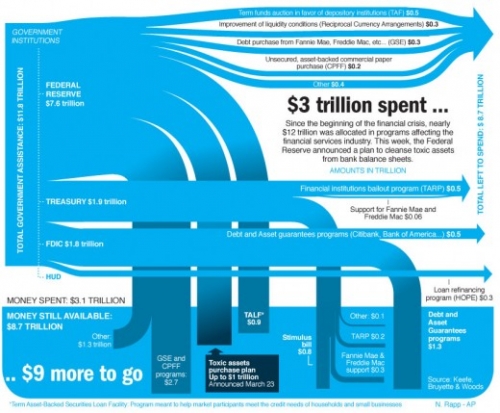Nathan at FlowingData – Strength in Numbers presented a Sankey diagram by AP’s Nicolas Rapp and Damiko Morris (originally from this post on Nicolas’ blog). It shows where the $173 billion AIG received from government went to.
I especially like the inverse waterfall arrow endings and how they intersect with the grid of beneficiaries.
Nicolas, who works in Information Graphics for Associated Press, later presented another Sankey diagramm, displaying how the “nearly $12 trillion that was allocated in programs affecting the financial services industry” were used.
The author says “I spent the day researching and realizing this graphic” (@Nick: how much time was the research, how much the drawing?)
He adds “Fun stuff”, a comment which probably refers to the Sankey graphics part rather than to the content depicted… 🙁





